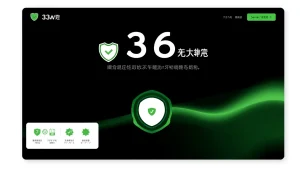Enhancing Independence: Comprehensive Guide to Mobility Equipment Solutions
Understanding Mobility Equipment
Mobility equipment plays a crucial role in enhancing the independence and quality of life for individuals with mobility challenges. Whether due to age, injury, or chronic illness, the right mobility aids can significantly improve daily function and overall well-being. Understanding the various types of mobility equipment and how to choose and use them effectively is essential for anyone navigating this aspect of health and wellness.
What is Mobility Equipment?
Mobility equipment refers to a range of devices designed to assist individuals with their movement needs. This can include everything from simple aids like canes and walkers to more complex machinery like electric scooters and wheelchairs. The primary purpose of mobility equipment is to enhance mobility, promote independence, and ensure that individuals can safely traverse their environments, whether at home, in the community, or while traveling.
Types of Mobility Aids
There are various types of mobility aids designed to meet different needs and capabilities:
- Canes: These are simple yet effective tools that provide balance and support for individuals who can walk but need some assistance.
- Walkers: More stable than canes, walkers are designed for those who require added support when walking.
- Wheelchairs: Available in manual and electric options, wheelchairs are essential for those who cannot walk or have significantly limited mobility.
- Scooters: Electric scooters facilitate longer-distance mobility for those who need assistance but can still sit upright and control steering.
- Stairlifts: These are installed in homes to assist individuals in navigating stairs safely.
- Lift Chairs: These chairs are designed to help individuals rise from a seated position by reclining and lifting the user to a standing one.
Benefits of Using Mobility Equipment
The benefits of mobility aids extend beyond physical support. These devices foster a sense of autonomy and boost mental well-being by allowing individuals to engage more fully in various activities.
- Increased Independence: Mobility aids allow users to move around more freely, promoting independence in everyday tasks.
- Safety: Aids like walkers and canes can prevent falls and related injuries, providing users with confidence in their movements.
- Social Engagement: With improved mobility, users can participate in social activities, maintain relationships, and reduce feelings of isolation.
- Mental Health: The increased ability to engage in everyday life can significantly enhance an individual’s mental health and self-esteem.
Choosing the Right Mobility Equipment
With the variety of mobility aids available, selecting the right one can be challenging. Several factors must be considered to ensure the chosen equipment aligns with the user’s specific needs.
Assessing Individual Needs
Understanding the specific mobility challenges an individual faces is key to choosing the right equipment. Factors such as physical limitations, endurance levels, and the environments in which the equipment will be used should all be assessed. A thorough evaluation can help in selecting the most appropriate aid:
- Consider whether assistance is needed for short distances or for more extensive activities, such as shopping or traveling.
- Evaluate the user’s strength and balance capabilities. For instance, those requiring minimal support might benefit from a cane, whereas a wheelchair might be necessary for those needing substantial assistance.
- Think about the user’s lifestyle and daily activities. If they enjoy going outdoors or engaging in social activities, durability and portability of the equipment should also be considered.
Consulting Healthcare Professionals
Consulting healthcare professionals is paramount when selecting mobility equipment. Occupational therapists or physiotherapists have extensive knowledge of mobility aids and can provide personalized recommendations based on the user’s needs. They may conduct assessments and help determine appropriate equipment based on:
- The individual’s medical history and current health status.
- The presence of any particular physical conditions that might affect mobility (e.g., arthritis, stroke, or neurological disorders).
- Specific user preferences or concerns regarding comfort and ease of use.
Cost Considerations and Insurance Options
Cost is an essential consideration when selecting mobility equipment. Prices can vary significantly based on the type of aid and any advanced features it may have. Some critical points to consider regarding costs include:
- Budget: Set a realistic budget that balances affordability with the quality and functionality of the equipment.
- Insurance Coverage: Many health insurance plans offer coverage for specific mobility equipment. Consult with insurance providers to understand what is covered and the process for obtaining reimbursement.
- Payment Assistance: Some organizations and nonprofits assist individuals in obtaining needed mobility aids, sometimes through grants or discounts.
Best Practices in Using Mobility Equipment
Proper usage and care are fundamental to ensuring that mobility equipment provides maximum benefit and longevity.
Proper Usage and Safety Tips
When using mobility aids, following safety tips is paramount to prevent injury and ensure effective support:
- Read Instructions: Familiarize yourself with the equipment’s manuals and operational instructions to use it safely and effectively.
- Practice: Spend time getting comfortable with your mobility aid in a safe space, practicing movements to build confidence.
- Be Aware of Surroundings: Always be conscious of your environment, including obstacles, stairs, or uneven surfaces that could pose risks.
Maintenance and Care for Mobility Aids
To extend the lifespan and ensure smooth functionality of mobility equipment, regular maintenance is essential. Basic maintenance practices include:
- Clean the equipment regularly to prevent wear and tear. Use appropriate cleaning products that won’t damage the materials.
- Inspect for any signs of damage or wear, like loose screws, damaged wheels, or frayed straps.
- Schedule professional servicing if necessary, particularly for complex equipment like powered scooters or wheelchairs.
Common Mistakes to Avoid
In the journey of using mobility equipment, several common mistakes can hinder effectiveness and safety:
- Neglecting to seek professional advice before purchasing equipment.
- Forgetting to adjust equipment settings to meet individual needs, such as handle height for walkers.
- Overusing or misusing the equipment, leading to damage or personal injury.
Innovations in Mobility Equipment
The field of mobility aids is constantly evolving, driven by innovation and technology. Advancements have made it possible for users to access more intuitive and user-friendly options.
New Technologies Enhancing Mobility
Technology has revolutionized mobility equipment design. Some notable advancements include:
- Smart Wheelchairs: Equipped with sensors and AI, these wheelchairs can navigate obstacles and assist with steering.
- Bluetooth-Enabled Scooters: These scooters can connect to smartphones, allowing for customization of settings and monitoring of battery life.
- Wearable Mobility Aids: Smart fabric technology can now produce clothing that assists with mobility, aiding those with weakness or instability.
Adaptive Features for Improved Usability
Many mobility aids are now designed with adaptive features that enhance usability:
- Height Adjustment: Many walkers and scooters offer adjustable heights, making them suitable for users of various sizes.
- Ergonomic Design: Modern mobility devices are increasingly designed to fit the user comfortably, offering improved grip and support.
- Portability: Innovations have made mobility aids more lightweight and foldable, increasing ease of transport.
Case Studies: Success Stories
Real-life success stories highlight how mobility equipment has transformed lives. For instance:
- A case study on an elderly woman, who after utilizing a smart scooter, regained the ability to attend community events, thus improving her social life and mental well-being.
- Another case involved a young adult with a spinal cord injury who adopted a custom manual wheelchair, enabling him to participate in sports and regain independence in his daily life.
Community and Resources for Mobility Equipment
Finding the right mobility equipment is made easier through community support and resources. Here, we discuss various avenues for assistance and information.
Support Groups and Online Communities
Support groups provide an essential source of information and encouragement. Online communities can offer virtual platforms for sharing experiences, tips, and resources. Some ways to engage in community discussions include:
- Joining local meet-ups or forums related to mobility challenges.
- Participating in social media groups that focus on mobility support and the sharing of advice among peers.
- Connecting with organizations that facilitate volunteer support and community resources for mobility-related issues.
Educational Resources and Workshops
Many organizations offer workshops aimed at educating individuals and caregivers about mobility equipment. These may include:
- Training sessions on how to use specific types of mobility aids effectively.
- Instructional workshops on maintaining mobility devices and navigating challenges presented by different environments.
- Webinars that cover new technologies and innovations in the field of mobility aids.
Local Organizations and Accessibility Programs
Accessibility programs and organizations can be vital in providing information, funding, and resources. They often work with healthcare providers to ensure that individuals have access to the needed mobility equipment. Look for organizations within your community that:
- Assist in funding mobility aids for those with financial constraints.
- Provide information about grants or financial assistance tailored to mobility needs.
- Disseminate resources about accessible public spaces and services.














Post Comment